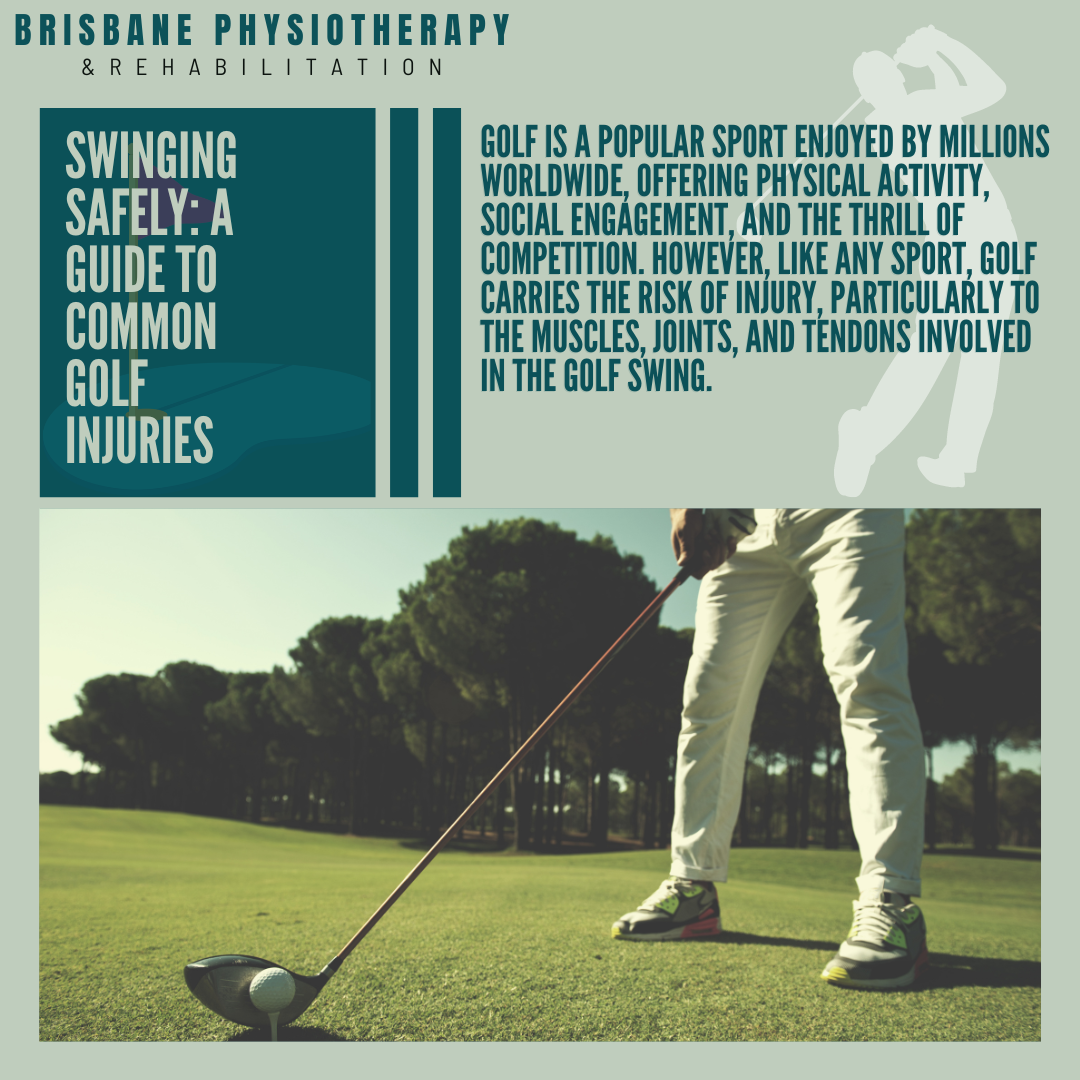Swinging Safely: A Guide to Common Golf Injuries
Introduction:
Golf is a popular sport enjoyed by millions worldwide, offering physical activity, social engagement, and the thrill of competition. However, like any sport, golf carries the risk of injury, particularly to the muscles, joints, and tendons involved in the golf swing. In this blog post, we'll explore some of the most common golf injuries, their causes, prevention strategies, and how physiotherapy can help golfers stay on course and avoid being sidelined by injury.
Common Golf Injuries:
Golfer's Elbow (Medial Epicondylitis): Characterised by pain and inflammation on the inner side of the elbow, golfer's elbow is caused by repetitive stress and overuse of the forearm muscles involved in gripping the club and controlling the swing.
Tennis Elbow (Lateral Epicondylitis): Similar to golfer's elbow but affecting the outer side of the elbow, tennis elbow results from repetitive strain and micro-tears in the tendons of the forearm muscles, often aggravated by improper swing mechanics or gripping techniques.
Rotator Cuff Injuries: The repetitive overhead motion of the golf swing can lead to strains, tears, or impingement of the rotator cuff muscles and tendons in the shoulder, resulting in pain, weakness, and limited range of motion.
Low Back Pain: The rotational forces generated during the golf swing can place significant stress on the lumbar spine, leading to muscle strains, facet joint irritation, disc herniation, or vertebral compression fractures, particularly in golfers with poor swing mechanics or underlying spinal issues.
Wrist and Hand Injuries: Golfers may experience injuries such as sprains, strains, or fractures in the wrists and hands, often due to excessive force or repetitive impact with the club, as well as improper grip pressure or swing technique.
Prevention Strategies:
Proper Warm-up and Stretching: Prior to playing or practising, golfers should perform a dynamic warm-up routine to prepare the muscles and joints for activity, including specific stretches targeting the shoulders, back, wrists, and forearms.
Technique and Swing Mechanics: Working with a qualified golf instructor to learn proper swing mechanics, grip techniques, and body positioning can help reduce the risk of injury and improve performance on the course.
Strength and Conditioning: Incorporating strength training exercises targeting the core, upper body, and lower body muscles can improve overall fitness, stability, and power generation during the golf swing, reducing the risk of overuse injuries.
Equipment Assessment: Ensuring that golf clubs are properly fitted to match the golfer's height, arm length, and swing characteristics can optimise performance and minimise strain on the body.
Rest and Recovery: Allowing adequate time for rest, recovery, and recovery between golf sessions is essential for preventing overuse injuries and promoting tissue healing and repair.
Physiotherapy Management:
Pain Management: Physiotherapists can provide manual therapy techniques, modalities, and therapeutic exercises to alleviate pain, reduce inflammation, and promote tissue healing in injured areas.
Biomechanical Analysis: Conducting a comprehensive biomechanical assessment of the golfer's swing mechanics, posture, and movement patterns can help identify faulty mechanics or imbalances contributing to injury risk.
Exercise Prescription: Developing individualised exercise programs focused on flexibility, strength, stability, and neuromuscular control can address underlying deficits and improve performance while reducing the risk of injury recurrence.
Manual Therapy: Hands-on techniques such as massage, joint mobilisation, and soft tissue mobilisation can help release tight muscles, improve joint mobility, and restore optimal movement patterns.
Education and Ergonomics: Providing education on injury prevention strategies, proper body mechanics, and ergonomic modifications can empower golfers to take proactive steps to protect their musculoskeletal health and enhance their game.
Conclusion:
While golf offers numerous health benefits and enjoyment, it's essential for golfers to be mindful of the risk of injury associated with the sport. By implementing preventive measures, seeking proper instruction, and engaging in physiotherapy intervention when needed, golfers can reduce the risk of injury, improve performance, and continue to enjoy the game for years to come. Physiotherapists play a vital role in supporting golfers in their pursuit of injury-free play and optimal musculoskeletal health, helping them swing safely and stay in the game.

